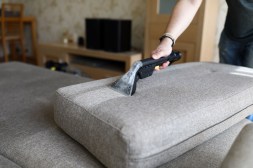A Beginner’s Guide to Planning Your DIY Bathroom Wall Repair Project
Are you looking to tackle that unsightly damage on your bathroom walls? Whether it’s water stains, mold, or just general wear and tear, doing it yourself can save you money and give you a sense of accomplishment. In this beginner’s guide, we’ll walk you through everything you need to know for planning your DIY bathroom wall repair project.
Assessing the Damage
Before diving into repairs, the first step is to assess the extent of the damage. Look closely at your walls for signs of mold, rot, or structural issues. It’s important to determine if it’s just surface-level damage or if there’s a deeper problem that needs addressing. Take notes and photographs if necessary so you can plan accordingly.

Gathering Your Materials
Once you’ve assessed the damage, it’s time to gather your materials. For most bathroom wall repairs, you’ll need items like drywall (if needed), joint compound, sandpaper or sanding block, primer and paint suitable for bathrooms (to resist moisture), caulk for sealing cracks around fixtures, and a tape measure. Don’t forget safety gear such as gloves and a mask when working with dust or chemicals.
Essential Tools for the Job
In addition to materials, having the right tools is crucial for an effective DIY project. Basic tools you’ll need include a utility knife for cutting drywall, a putty knife for applying joint compound smoothly, a level to ensure your repairs are even, and possibly a power sander for larger areas. If you’re replacing drywall sections or making significant repairs, consider having screws and a drill handy as well.
Understanding Repair Techniques
Depending on your assessment of the damage type—whether it be small holes from nails or larger areas affected by water—you’ll need specific repair techniques. For small holes in drywall patches: clean around the area first then apply joint compound using your putty knife until smooth; once dry sand down gently before painting over it with primer followed by color-matched paint.
Planning Your Timeline
Lastly, set out an estimated timeline before starting your project. Depending on how extensive your repairs are—like drying times after applying compounds—you might want to allocate several days up to weeks depending on complexity. Make sure not to rush through steps like drying time as this could lead to more issues later on. Stay organized with tasks listed out so that nothing slips through the cracks.
By following these steps in planning your DIY bathroom wall repair project effectively—from assessing damage through gathering supplies—you’re well on your way towards achieving beautiful results without breaking the bank. Happy repairing. Remember: patience is key.
This text was generated using a large language model, and select text has been reviewed and moderated for purposes such as readability.


